第22章
After this we must distinguish of what sort of nutriment it is a secretion, and must discuss the catamenia which occur in certain of the vivipara.For thus we shall make it clear (1) whether the female also produces semen like the male and the foetus is a single mixture of two semens, or whether no semen is secreted by the female, and, (2)if not, whether she contributes nothing else either to generation but only provides a receptacle, or whether she does contribute something, and, if so, how and in what manner she does so.
We have previously stated that the final nutriment is the blood in the sanguinea and the analogous fluid in the other animals.Since the semen is also a secretion of the nutriment, and that in its final stage, it follows that it will be either (1) blood or that which is analogous to blood, or (2) something formed from this.But since it is from the blood, when concocted and somehow divided up, that each part of the body is made, and since the semen if properly concocted is quite of a different character from the blood when it is separated from it, but if not properly concocted has been known in some cases to issue in a bloody condition if one forces oneself too often to coition, therefore it is plain that semen will be a secretion of the nutriment when reduced to blood, being that which is finally distributed to the parts of the body.And this is the reason why it has so great power, for the loss of the pure and healthy blood is an exhausting thing; for this reason also it is natural that the offspring should resemble the parents, for that which goes to all the parts of the body resembles that which is left over.So that the semen which is to form the hand or the face or the whole animal is already the hand or face or whole animal undifferentiated, and what each of them is actually such is the semen potentially, either in virtue of its own mass or because it has a certain power in itself.
I mention these alternatives here because we have not yet made it clear from the distinctions drawn hitherto whether it is the matter of the semen that is the cause of generation, or whether it has in it some faculty and efficient cause thereof, for the hand also or any other bodily part is not hand or other part in a true sense if it be without soul or some other power, but is only called by the same name as the living hand.
On this subject, then, so much may be laid down.But since it is necessary (1) that the weaker animal also should have a secretion greater in quantity and less concocted, and (2) that being of such a nature it should be a mass of sanguineous liquid, and (3) since that which Nature endows with a smaller portion of heat is weaker, and (4) since it has already been stated that such is the character of the female- putting all these considerations together we see that the sanguineous matter discharged by the female is also a secretion.And such is the discharge of the so-called catamenia.
It is plain, then, that the catamenia are a secretion, and that they are analogous in females to the semen in males.The circumstances connected with them are evidence that this view is correct.For the semen begins to appear in males and to be emitted at the same time of life that the catamenia begin to flow in females, and that they change their voice and their breasts begin to develop.So, too, in the decline of life the generative power fails in the one sex and the catamenia in the other.
The following signs also indicate that this discharge in females is a secretion.Generally speaking women suffer neither from haemorrhoids nor bleeding at the nose nor anything else of the sort except when the catamenia are ceasing, and if anything of the kind occurs the flow is interfered with because the discharge is diverted to it.